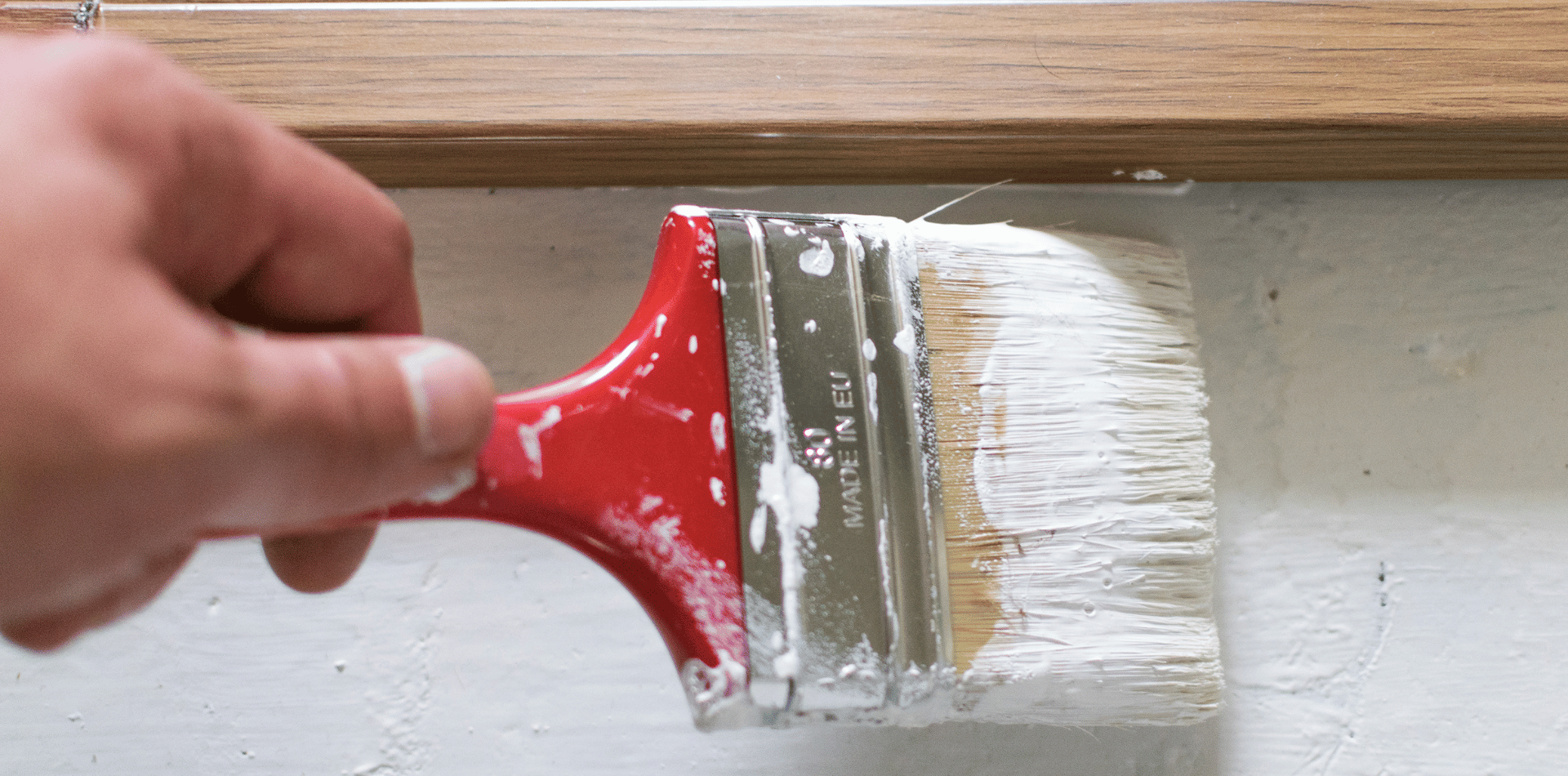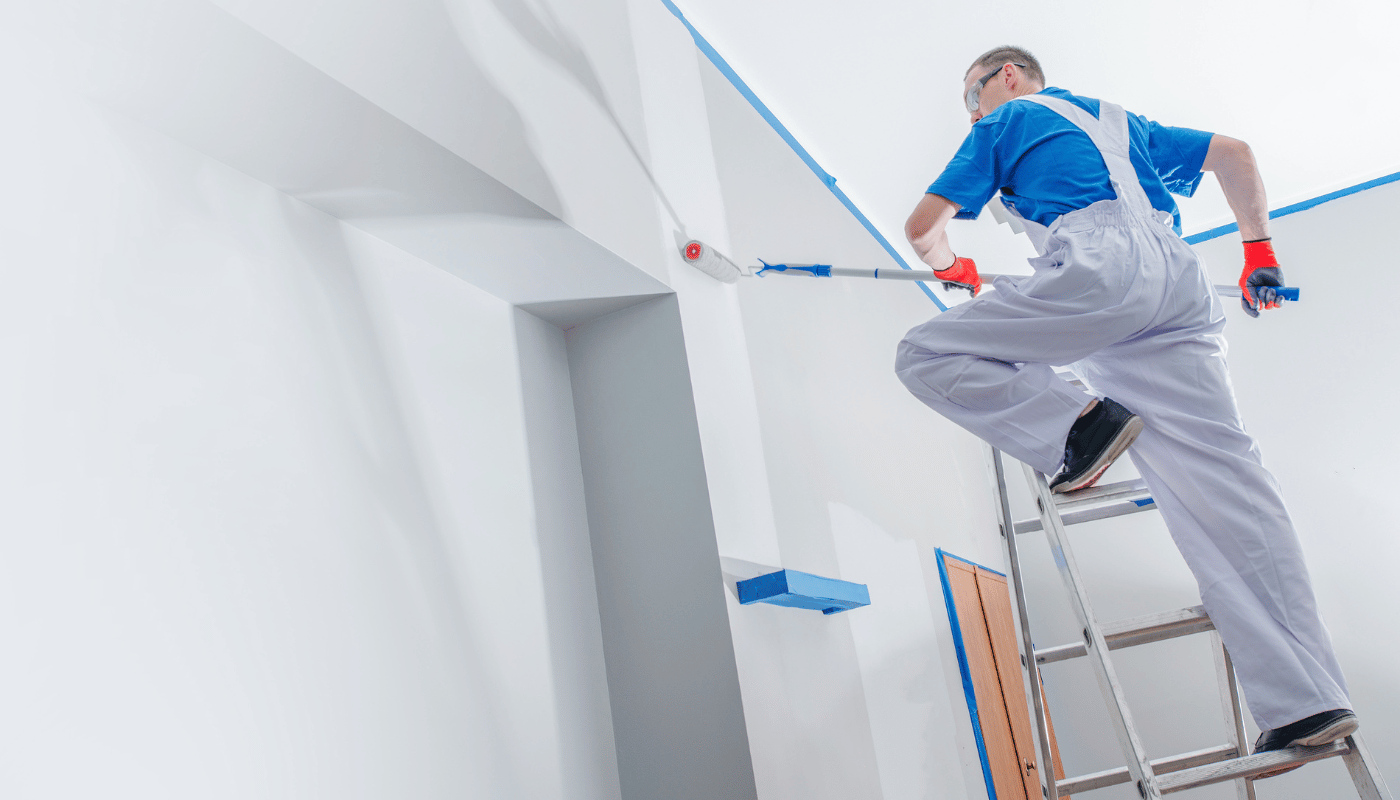Expert Surface Preparation -
The essential things to know.

Expert surface preparation
Expert surface preparation is a fundamental component of a professional painting project and a critical determinant of the paint's longevity and finish quality.
Professional painters understand that the durability and appearance of the final paint job are directly linked to the meticulousness of the preparatory steps.
Let's look into the aspects that underscore the importance of expert surface preparation.
Cleaning and Degreasing
Before any painting begins, surfaces must be thoroughly cleaned and degreased.
This is crucial because paint cannot adhere properly to dirty, oily, or greasy surfaces. Professional painters use appropriate cleaning agents and techniques to remove all forms of contamination, including dust, dirt, grease, and soot, which are common in areas like kitchens and near heating systems.
This ensures that the paint will adhere properly and have a smooth finish.
Sanding and Smoothing
Sanding is another critical preparatory step that professionals undertake meticulously.
This process removes the glossy layer from the previous paint job, providing a rough surface for the new paint to adhere to. It also helps to smooth out imperfections, such as drips, brush strokes, or uneven patches from previous paint jobs.
For new surfaces, sanding ensures an even and smooth base, which is essential for an optimal paint application.
Professionals have the tools and expertise to sand surfaces evenly without creating gouges or uneven areas that could mar the final appearance.
Repairing Flaws
Walls and other surfaces often have flaws such as cracks, holes, and dents that need to be addressed before painting.
Professional painters are skilled in techniques to repair these imperfections. This may involve filling holes with spackle or joint compound, fixing larger areas with new pieces of drywall, or sealing cracks to prevent future damage.
They ensure that these repairs are smooth and level with the surrounding surface, preventing them from being visible once the paint is applied.
Addressing Stains and Mildew
Certain issues, such as water stains, ink, or mildew, require special treatment to prevent them from bleeding through the new paint. Professionals know how to properly seal these stains with the appropriate primers or sealers to ensure they do not ruin the appearance of the paint job. In cases of mildew or mould, professional painters will also treat the area with fungicides or appropriate cleaning solutions to address the root of the problem, ensuring that the surface is not only visually clean but also hygienically safe.
Priming
Priming is an essential step in surface preparation that professionals never skip.
A primer serves multiple purposes: it ensures better adhesion of paint to the surface, increases paint durability, and provides additional protection for the material being painted.
Additionally, primer is crucial for ensuring an even and uniform appearance, especially when changing paint colours or covering dark shades.
Professional painters choose the right type of primer based on the surface material and the type of paint being used, ensuring that the paint job will look great and last longer.
Expert Evaluation
Part of expert surface preparation is the ability to evaluate the condition of the surface accurately.
Professional painters can identify issues that may not be visible to the untrained eye, such as subtle signs of rot, structural weaknesses, or areas prone to moisture. By addressing these issues before painting begins, professionals can prevent future problems and ensure that the paint job stands the test of time.
Expert surface preparation is a detailed and labour-intensive process that sets the foundation for a successful paint job. Professional painters bring the knowledge, skills, and attention to detail required to prepare surfaces properly, ensuring that the paint adheres correctly and provides a smooth, durable finish.
This meticulous preparation not only enhances the aesthetic appeal of the painted space but also extends the life of the paint job, making it a wise investment for any painting project.
Efficient Application Techniques
Efficient application techniques are crucial in the realm of professional painting, as they significantly impact the speed of the project and the quality of the finish.
Through extensive experience and training, professional painters have honed their skills to apply paint in the most effective manner.
Let's look at some of the aspects that define their proficiency:

Brush Techniques
Using brushes, professional painters can achieve sharp, clean edges and fine details that are often required around trim, mouldings, and other intricate areas. They have mastered the art of "cutting in" – a technique used to paint neat lines around these areas without the need for masking tape. This skill requires a steady hand and a good understanding of how paint behaves. Professionals also know how to properly load the brush with paint to avoid drips and runs, ensuring a smooth, even application.
Roller Techniques
For larger surface areas like walls and ceilings, rollers are the tool of choice for professional painters.
They have perfected the art of using rollers to achieve an even coat with minimal splatter. Key to this is the 'N' or 'W' rolling technique, where the painter rolls paint in narrow sections across the surface, spreading the paint evenly and reducing the likelihood of marks.
Professionals also understand the importance of using the right type of roller for the paint and surface being used – such as foam, nap, or microfibre rollers – to achieve the best finish.
Spraying Techniques
Paint sprayers can provide a superior finish on large or complex surfaces and are particularly useful for exterior painting or large interior spaces.
Professional painters have the expertise to operate these tools effectively, adjusting the nozzle and pressure settings to match the paint type and surface. They know how to maintain a consistent distance and speed while spraying, ensuring a uniform coat without drips or unevenness. Mastery of spraying techniques also involves knowing how to properly prepare and protect the surrounding area to prevent overspray.
Efficiency and Speed
One of the hallmarks of professional painters is their ability to combine quality with speed. They achieve this through efficient techniques such as working systematically across a surface, maintaining a steady pace, and avoiding unnecessary movements. This efficiency doesn't compromise the quality; instead, it ensures that the project progresses smoothly and is completed within the expected timeframe.
Paint Mixing and Application Consistency
Consistency in paint colour and texture is vital for a professional finish. Professional painters know how to properly mix paints to eliminate colour variations and ensure that the paint is the correct consistency for application. They also understand the importance of maintaining a "wet edge" – applying paint in a way that prevents lap marks and ensures a seamless appearance across the entire surface.

Layering and Drying Times
Understanding the correct layering of paint and respecting drying times between coats are crucial factors in achieving a durable, attractive finish.
Professional painters know how to apply the right number of coats and how long to wait between them, based on the type of paint and the conditions of the workspace. This knowledge prevents problems such as bubbling, peeling, or colour inconsistencies.
Adaptability to Different Surfaces and Conditions
Different surfaces and environmental conditions require different approaches to paint application.
Professional painters are adept at adapting their techniques to suit various materials (like Gyprock, wood, stucco, or metal) and changing conditions (such as humidity, temperature, and light).
Their expertise ensures that regardless of the circumstances, the paint is applied in the most effective way possible.
The efficient application techniques of professional painters are the result of years of experience and continual learning.
These techniques contribute not only to the speed and efficiency of painting projects but also to the superior quality and longevity of the finish.
By leveraging their expertise, professional painters ensure that every stroke, roll, or spray contributes to an outstanding final result. This efficiency, combined with their meticulous attention to detail, sets professional painters apart and makes them a valuable asset to any painting project.





